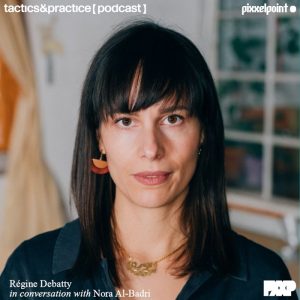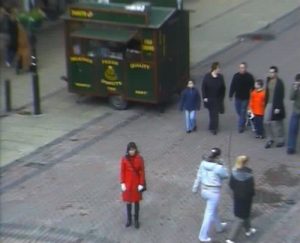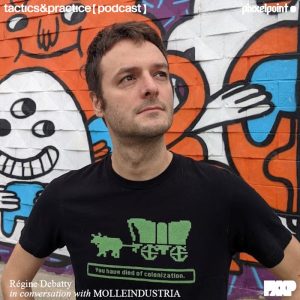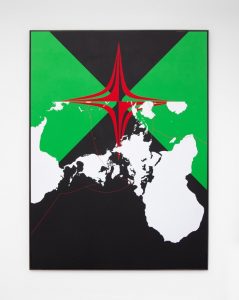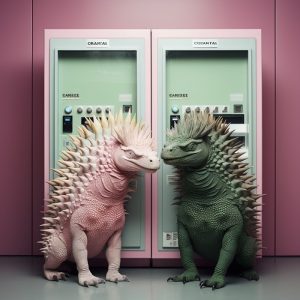This month the second edition of urban interface, a research project exploring the interspaces between public and private, will be kicking off in Oslo.

The exhibition will pervade the districts of Grünerløkka, Tøyen and Grønland from September 14th to October 7th. The conference, titled The Porous City: Art claiming the urban void, will be held on 14th and 15th of September at Fabrikken.
The first episode of the project took place in Spring in Berlin (report part 1 and 2). Urban Interface was initiated and directed by Susanne Jaschko and produced by Atelier Nord, a project base with the objective of supporting unstable art forms, such as electronic and new media art.
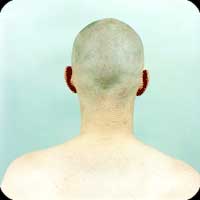 Which provides me with a great excuse to publish an interview with Atle Barcley, the director of Atelier Nord. Atle is also moderator of E-kunst mailing list and member of the board of Oslo Open. He was educated as an artist at Trondheim Academy of Fine Arts. He is former chairman of the board Production Network for Electronic Arts in Norway, net art editor at Kunstnett Norge, initiator of 110 mailing list and co-admin of Syndicate mailing list.
Which provides me with a great excuse to publish an interview with Atle Barcley, the director of Atelier Nord. Atle is also moderator of E-kunst mailing list and member of the board of Oslo Open. He was educated as an artist at Trondheim Academy of Fine Arts. He is former chairman of the board Production Network for Electronic Arts in Norway, net art editor at Kunstnett Norge, initiator of 110 mailing list and co-admin of Syndicate mailing list.
What is the story of Atelier Nord? When did it start and how has it evolved over time? How big is the structure?
Atelier Nord was established in 1965 as a workshop for metal print. In the ’80s computers were introduced into the printmaking process. At the same time artists at Atelier Nord started to use the computers for animation work. It soon became evident that the printmakers, at least at Atelier Nord, were not into computer print. In the ’90s the workshop developed into a center for electronic arts and eventually the printmaking equipment was abandoned.
From the ’90s all resources were tied up in technical infrastructure and people. There were over 10 people employed at the most. In the ’90s artists did not have their own computers and the know how. Our aim was to help artist to use computers in their artistic process. In the beginning of our century the situation had changed dramatically and there were no longer need for a center for electronic arts that provided computers and technical know how.
In 2002 we redefined ourselves as a projectbase for unstable arts. The projectbase is a skeleton organization that can be the platform for a wide range of projects of different nature and size. It’s paramount of course that such and organization has some base funding for projects. When this change was initiated the staff was reduced to two people, a director and an office manager, most of the equipment was defined obsolete and we moved to a smaller and more efficient space. This way we managed to release most of our budget and time to projects.
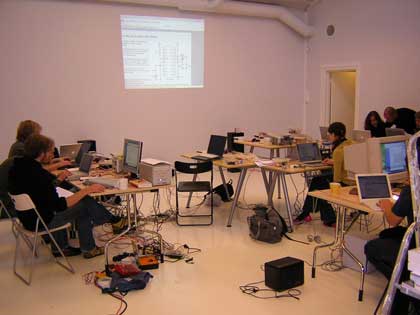
The strategy plan I wrote for Atelier Nord when I took over as director was called De-insitutionalising and aiming. I was using some energy to attack the center for electronic arts, which I think has proven to develop into just another rigid art institution more than once. I argued for a strategy that internalized the unstable nature of the arts in general and new technology in special.
“One can observe that centers for electronic arts are so tied up to special techniques and specialized conceptions of technology that they are becoming obsolete when new technology are introduced. To try to stay on top they ask for more money to invest in even more equipment when the problem is that the whole structure is in fact obsolete. We need networks and nodes, not centers.”
Growing is for cowards. To let things go is courageous.
How does Atelier Nord manage to finance its projects?
We receive about € 270 000 from the state annually. After the change to projectbase we have resources within our own budget to do projects, but for larger productions like Generator.x, Interface and
Society or Urban Interface we are depending on external funding in addition to this. The fact that we already have half of the budget covered when we start to apply for additional funding makes it easier to get more money – it seems like the funds are more likely to support projects that already have some money.
Most of our external project funding is also public – form Arts Council Norway, Public Arts Norway, etc. There are very few private funds in Norway, only one significant – the Freedom of Expression Foundation.
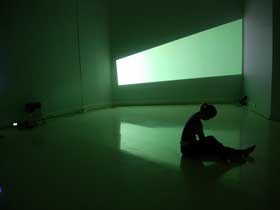 Let’s say that i’m an artist working with unstable art forms, such as electronic and new media art. Which kind of support can i expect to find at Atelier Nord?
Let’s say that i’m an artist working with unstable art forms, such as electronic and new media art. Which kind of support can i expect to find at Atelier Nord?
Your suggestion is as good is mine. What do you need? The idea about the projectbase is that we provide what is needed for each individual project. We do all types of consulting on project development; infrastructure like space for test installations and project groups, office space including phone expenses; technical equipment; we do accounting and provide other types of administration services for projects and some projects we co-found. It can be anything. One artist used industrial components in his installation. He had a complicated situation when he was trying to order those components because the producers had systems suitable for other bigger companies – not for individual artists. The solution we found was simply that he bought his stuff through Atelier Nord. Then the ordering was running smooth.
Have you noticed over the years an improvement of the conditions of and the reflection related to unstable art forms? Is there still much work to do before these art forms get the recognition they deserve? What do you think is their relationship with more traditional art forms in Norway?
Unstable art forms, as we define it, is arts that have a specially challenging production, that has a partially developed distribution system at best and that are not fully contextualized – the role of these art forms in the present and in a historical context are still debated.
So the nature of unstable art forms is that they are not fully recognized. Our job is to try to stimulate the production of new art forms, help distribution and bring this praxis into a broader historical and contemporary context.
New media art used to be an unstable art form, but is developing into a stable system. There are always some special challenges when producing works with new technical equipment. There is a distribution system within the media art scene, but the distribution of media art on the contemporary art scene could be better. Media art is well contextualized within the scene, but the full complexity of media art is not recognized withing the contemporary art scene.
Atelier Nord’s strategy for new media art is to bridge the gap of understanding between the new media art scene and the contemporary art scene. Atelier Nord is not a media art institution however, we will stop working with new media art as soon as this art form is stabilized withing a broader context.
In the ’90s the major part of our resources were used on video art. In the beginning of our century we changed our priorities dramatically, we are no finishing our engagement in video art by working politically to establish a national online video archive. (The potential of distribution of video is bigger than what a traditional museum and gallery structure can provide.)
These changes in priorities sometimes makes Atelier Nord unpopular with artists that works with stuff that we abandon, but this is the only way to go if we want to develop. The last ten years three other institutions outside of Oslo and the PNEK network was established. PNEK was initiated by Atelier Nord and the three other organizations all received our support. Contrary to most other organizations Atelier Nord is not into unlimited growth. We would rather like to see more players on the scene.
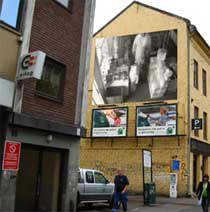
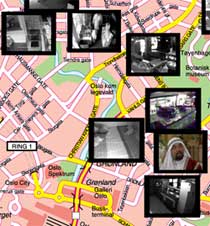 Part of Urban Interface Oslo: Michelle Teran‘s new work Friluftskino
Part of Urban Interface Oslo: Michelle Teran‘s new work Friluftskino
A few years ago, Atelier Nord organized Reality Check, a series of events presenting art projects gone completely wrong. Why was it important to discuss projects that failed? What were the highlights of the events?
Per Platou that directed the Reality Check was fed up by art discourse being pretentious. He also observed that a lot of those projects that received support from the Arts Councils “Art and new technology” funding was nowhere to be seen on the scene. The question was “What happened?” He realized some of them failed – badly. Of course it’s the failed projects that we can really learn form, but it’s always the successes that are brought forward.
At the Reality Checks the responsible persons (usually the artists) were invited up on stage to lighten their heart, admit failure and help us to learn from their mistakes. There was only one rule: they could not blame anyone else. It was really funny and sometimes heart breaking. The group form one project that failed so badly it is almost unbelievable that they gathered on the Reality Check stage – the tension between them was lethal.
The project was a huge success, the bar it was held in was packed every night. The prime serious TV show on art wanted to air it and when Per Platou politely explained to them that sending it on TV was not compatible with the basic concept they were really insisting. And that is when we stopped doing it. We had the time and the money to continue, we had an audience, we had a huge number of people now wanting to be a failure. It became a success, which was not compatible with the basic concept of Reality Check.
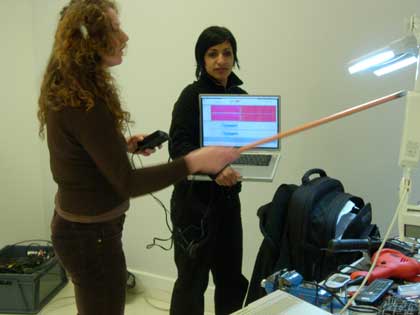 You invited people to the Maxwell city workshops, an artistic investigation into the electromagnetic urban environment. How did the workshops go? What happened there exactly?
You invited people to the Maxwell city workshops, an artistic investigation into the electromagnetic urban environment. How did the workshops go? What happened there exactly?
Well, we discussed strategies and techniques for using electromagnetism in art. We had Armin Medosch as a guest lecturer adding a context for this in addition to Erich Berger and Martin Howse who directed the workshop.
The most fun part I think was the actual investigation in urban space. We had a range of electromagnetic sniffers, some commercial products some of Martin Howse design. These sniffers transformed electromagnetism into sound. We were basically listening to the city. We also bought a megaphone, connected that to a sniffer and had a live show going. This workshop happened simultaneously with a city wide music festival in Oslo – I don’t feel our contribution was fully recognized.
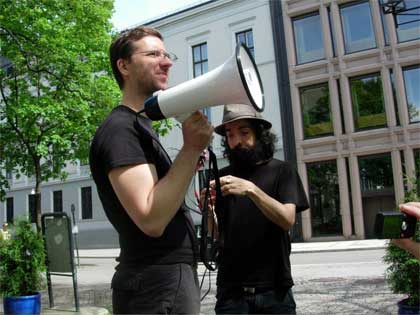 How active is the electronic and new media art in Norway? Can you tell us about organizations and artists who make it happen?
How active is the electronic and new media art in Norway? Can you tell us about organizations and artists who make it happen?
The new media art scene in Norway are well organized. We have 4 other sister organizations that collaborates through Production network for electronic arts (PNEK). BEK in Bergen, at the west coast of Norway, was established by a composer and a new media artist and are well known for the Piksel festival. TEKS in Trondheim, mid-Norway, are working with art and new technology from a fine arts perspective and are doing the annual Trondheim Matchmaking festival. IoLab in Stavanger, at the southwest coast started a biannual on unstable arts in public space last year. (And no, not all institutions in Norway are into the term “unstable arts”. I did some serious development work on that biannual.) Notam in Oslo is in a an contemporary and electronic music tradition.
Of course there’s a lot of artists who use new media in their production, very few however are into critique of technology. This is one of the reasons that Atelier Nord do what we do these days and I think it is also the background for the Pixel festival at BEK. Stahl Stenslie, that is now withdrawn for his own art practice while being Dean at the Art Academy in Oslo, is probably the new media artist most people abroad would recognize. HC Gilje, that was part of 242.pilots is participating in our Urban Interface show this year. I would also recommend you to take a closer look at Motherboard and Thomas Kvam.
Any upcoming project at Atelier Nord that you could already share with us?
This autumn we are producing a project initiated by Susanne Jaschko.
Urban Interface looks at the changes in the private and the public. It started in Berlin in April and will be an exhibition in public space and a conference in Oslo opening on September 13th. Michelle Teran, HC Gilje, Vibeke Jensen, Jørgen Larsson and Bjørnar Habbestad, Laura Beloff and Sancho Silva and John Hawke are exhibiting. Lev Manovich, Florian Rötzer, Drew Hemment and Martin Rieser are among the speakers. Visitors will get the opportunity to see Oslo in a special perspective.
Thanks Atle!
Images courtesy of Atle Barcley.

